|
|
S.218 – Taliesin III, State Route
23, Spring Green, Wisconsin MAP
TO PROPERTY MAP
TO TOUR & VISITOR CENTER CLICK HERE FOR INTERIOR PHOTOS CLICK HERE FOR FURNITURE PHOTOS CLICK HERE FOR OTHER TALIESIN
BUILDINGS Taliesin became Wright’s home and
studio after Oak Park (S.002). A move was necessitated by his romantic
involvement with a client’s wife (see S.104), and Wright fled to the
valley of his ancestors in Wisconsin.
This extended property was already home to his first design, a family
church (S.000) as well as a
school run by his maternal aunts (S.001, S.069 & S.228). His own birthplace, Richland Center, is
nearby. Here at Taliesin Wright
designed many of his masterpieces, including Fallingwater. Wright’s Taliesin has undergone many
changes. The original home, Taliesin
(S.172) was built in 1911. It was
destroyed in the tragic arson that killed Mamah Borthwick and her children, together with Taliesin
apprentices and laborers. Taliesin II
(S.182) replaced the home in 1914. It,
too, caught fire (possibly by lightning) and was rebuilt and enlarged in 1925
by this, the current Taliesin III. Taliesin III continued to serve as
Wright’s summer home until his death, and his widow likewise remained here
until her passing. A detailed two-hour tour explores
the history of the three buildings as well as the various outbuildings and
add-ons that have been converted from stables and coops to living space and
other practical applications. Some
areas serve as apartments for Taliesin Fellowship employees and
retirees. In 2016 visitors on the tour
were permitted to take interior photographs.
The interior includes a wide range of Wright furniture from the beginning
of the century through the 1950s. Photographed on April 30, 2016. Opus: T.1104 Tourist information brochure (PDF) |



















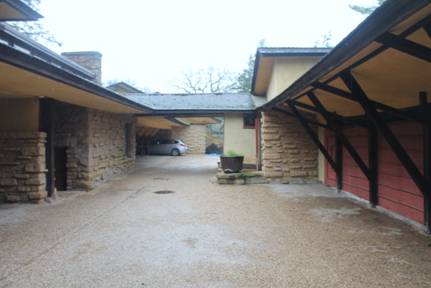






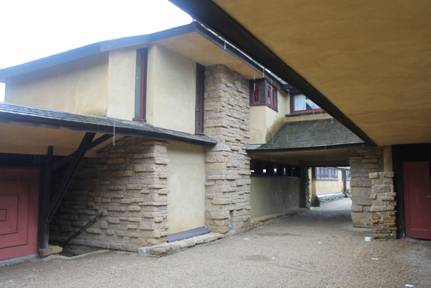








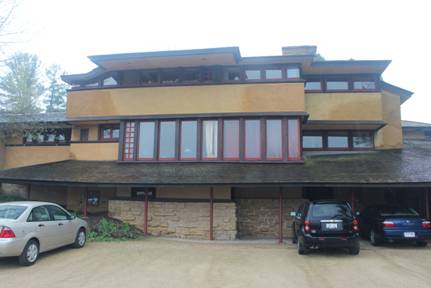












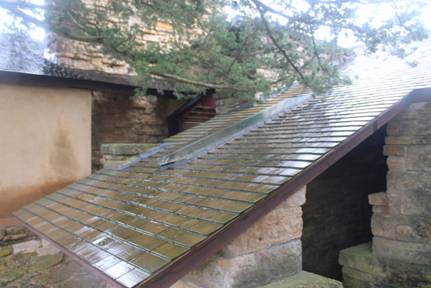

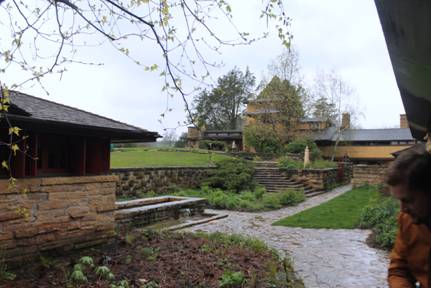
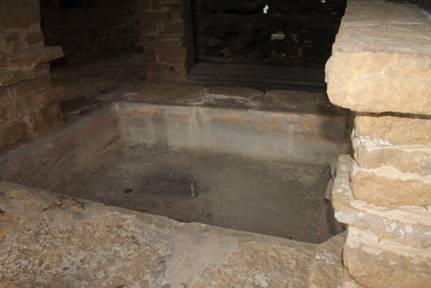




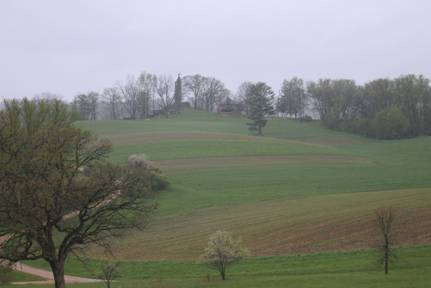
Right: view of Romeo & Juliet windmill (S.037) and Porter Residence (S.134) from home & studio



Right: the white patio furniture might look out of place,
but those chairs are also seen
in historic photos of the enclosed garden built for Mrs.
Wright in 1960 (S.220). That garden contained
a pool and patio, but “has been converted back to its
natural state,” according to Prof. Storrer.

|
New
05/10/2016 Revised
05/05/2018 |


